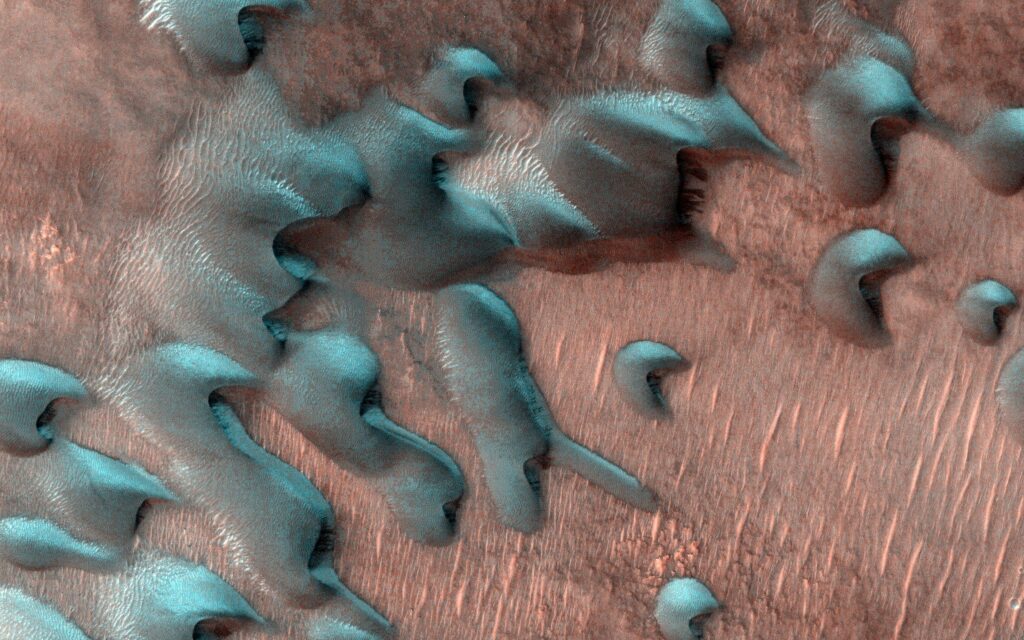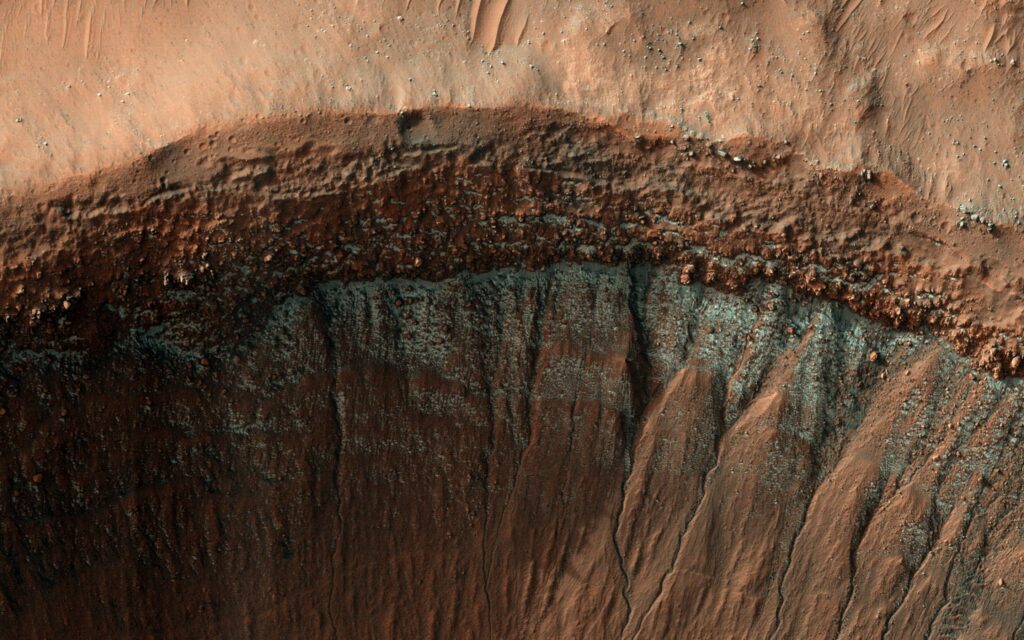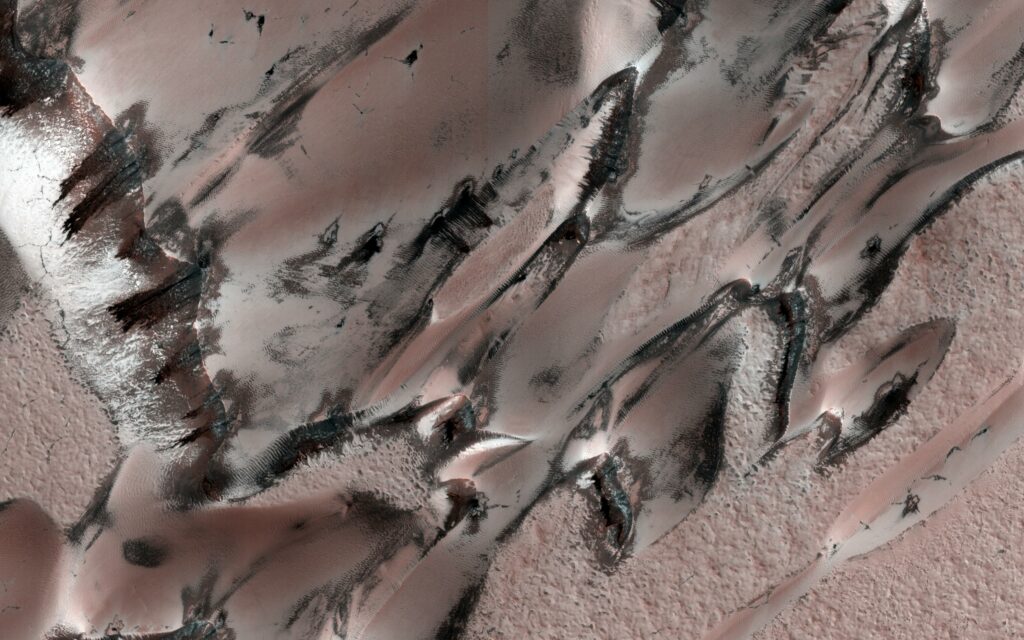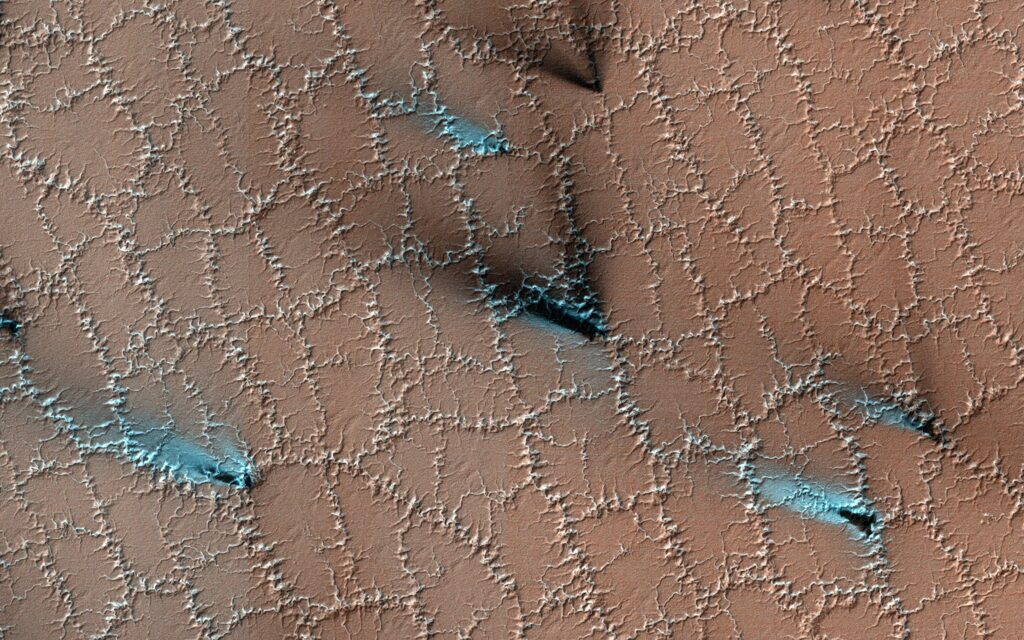On the occasion of the winter holidays, NASA has published a series of photos. They demonstrate winter on Mars.

The axis of rotation of Mars is inclined to the plane of its orbit at an angle of 25 degrees, which is very close to the value of the inclination of the earth’s axis. Therefore, the Red Planet is going through a similar cycle of changing seasons. However, this is where the similarity between the planets actually ends. During winter, the temperature at the Martian poles drops below -125 °C. This leads to the fact that carbon dioxide from its atmosphere settles to the surface in the form of dry ice.

The images taken by the MRO apparatus show frost-covered Martian dunes and crater slopes. It mainly consists of dry ice. Water ice can also be found at the Martian poles. However, its main deposits are still hidden under the surface.

Can it snow on Mars? According to the researchers, yes. But this happens only at the poles of the planet during the coldest nights. Therefore, so far we have no photos of Martian snowfalls. At the same time, it should be borne in mind that Martian snowflakes consist of the same dry ice. Therefore, they have an unusual cubic shape for us and are very small — they are smaller than the thickness of a human hair.

With the arrival of spring, dry ice begins to sublimate. This leads to peculiar eruptions at the poles, which jets of carbon dioxide escaping from under the surface raise geyser-like fountains of dark dust. It then settles, creating various bizarre formations. MRO images also show unusual polygonal formations at the Martian poles. They arose when water ice split the soil into polygons.
Earlier we talked about how Mars Express photographed the “festive” landscape at the south pole of the Red Planet.
According to https://www.jpl.nasa.gov
Follow us on Twitter to get the most interesting space news in time
https://twitter.com/ust_magazine
